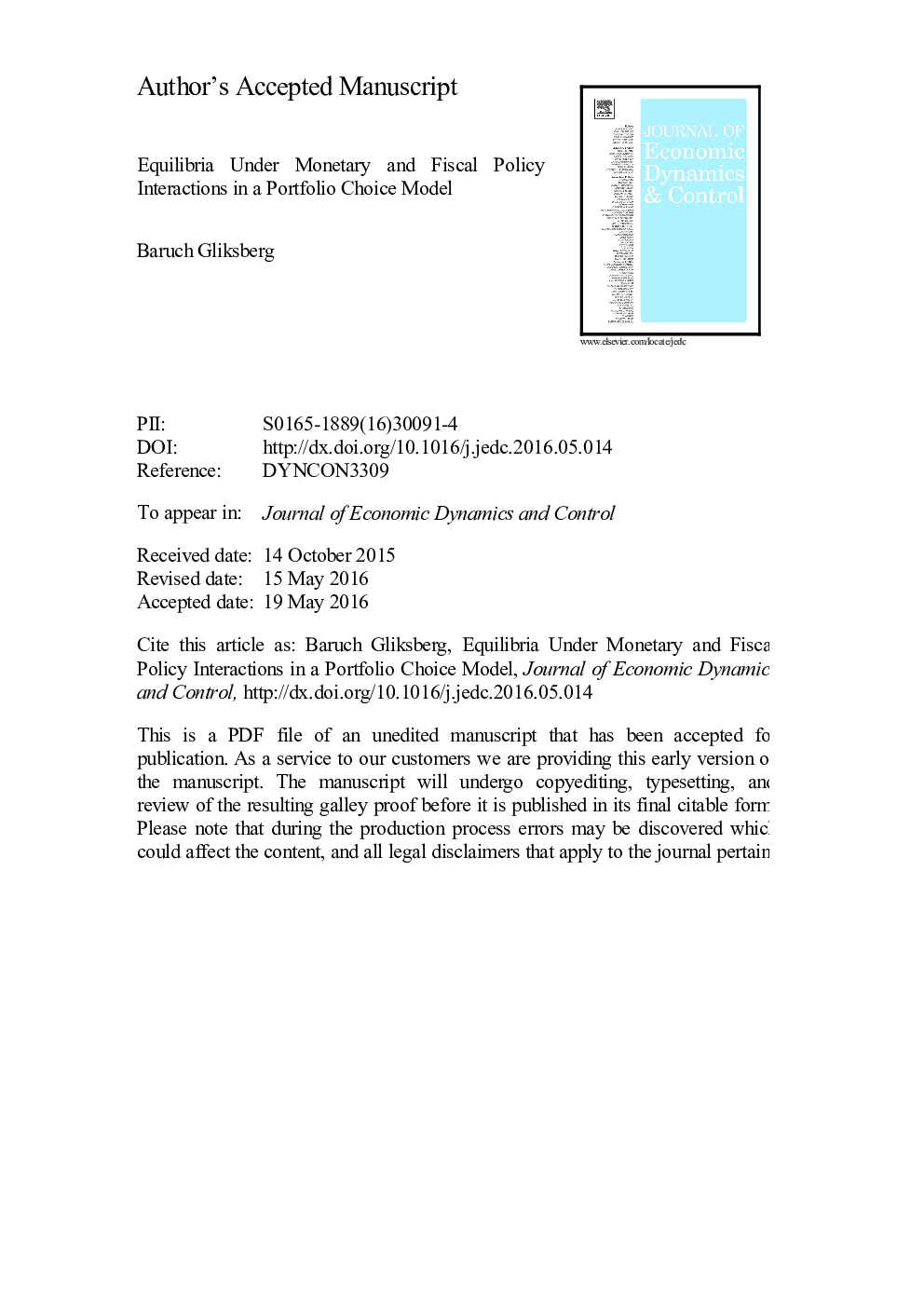| Article ID | Journal | Published Year | Pages | File Type |
|---|---|---|---|---|
| 5098148 | Journal of Economic Dynamics and Control | 2016 | 44 Pages |
Abstract
This paper studies how the presence of income-taxes changes the properties of general equilibrium models with monetary and fiscal policy interactions. It is found that from a global perspective, the only policy regime that leads to a unique equilibrium is one where fiscal policy is active, i.e. the fiscal theory of the price level regime in Sims (1994). From a local perspective, there are three regimes. In particular, and relative to the previous literature following Leeper (1991), a new third regime exists where a passive fiscal rule combined with a passive monetary rule can still deliver determinacy where the same area of the parameter space would lead to multiple solutions if taxes were lump sum. To obtain the size of the new regime, the paper characterizes analytically the extent to which tax cuts are self-financing and how the distortionary tax Laffer curve looks near the steady state. In the new regime, monetary and fiscal backstops are brought into play so as to rule out off equilibrium dynamics, and inflation can temporarily increase in order to increase seigniorage revenues. With this flexibility, the monetary policy is consistent with the real debt remaining bounded, and the arithmetic that follows is monetarist and unpleasant in the sense of Sargent and Wallace (1981).
Keywords
Related Topics
Physical Sciences and Engineering
Mathematics
Control and Optimization
Authors
Baruch Gliksberg,
